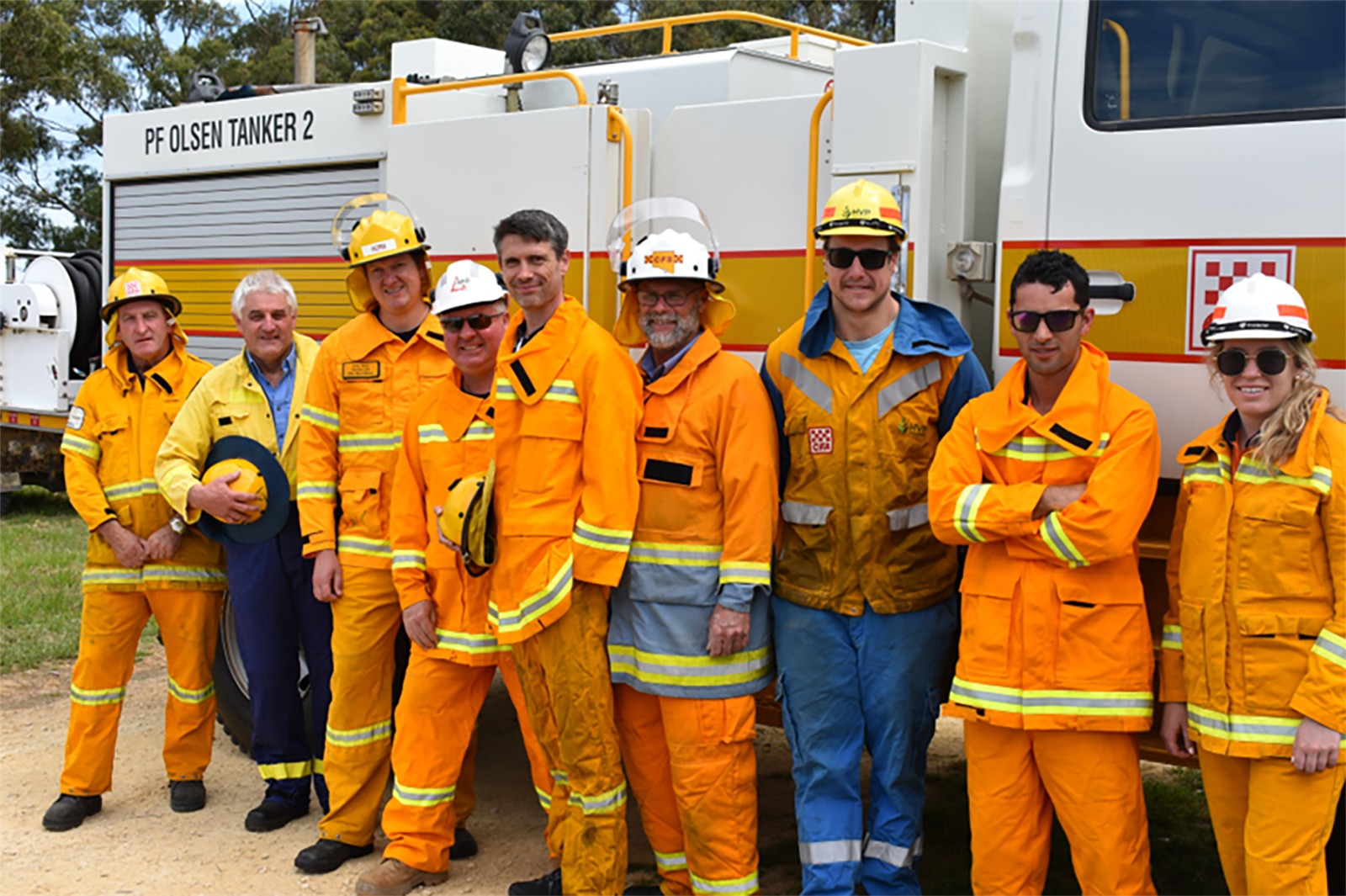
“With 336,531 hectares of plantations in Victoria, it’s essential the plantation industry is well equipped and ready for the threat of wildfire,” CFA’s Forestry Industry Brigades (FIB) Field Officer Ian Hamley said.
“Critical to its success are forestry industry brigades.”
In 1997 the Victorian Government introduced legislation requiring forest plantation companies to form fire brigades when their plantation assets reached a critical size. FIBs are formed under Section 23A of the Country Fire Authority Act. There are 19 FIBs in Victoria providing critical support to CFA and other fire agencies in both preparedness and response activities.
Ian is actively engaged with the different industry brigades to ensure good communications and relationships with CFA, and to help FIBs meet member training and equipment requirements by providing advice and guidelines.
“FIBs are self-funded and rely heavily on the guidance of CFA to provide the appropriate training and equipment to meet their legislated requirements,” Ian said.
With billions of dollars of assets at risk from wildfire each summer, Victoria’s FIBs are well organised and take their role seriously.
Their training program, which aligns with CFA’s, includes General Firefighter, Plantation Firefighter and Class A foam use.
Each year Hancock Victorian Plantations runs a well attended weekend firefighter training camp at Shelley in north-east Victoria. The camp covers training aspects including planned burns and suppression tactics. This year’s camp took place in early May.
FIBs, and the forestry industry more generally, are becoming more sophisticated in their approach to wildfire, with increasing investment in preparedness and response capabilities as part of the wider wildfire sector. For example, in south-west Victoria,the forestry industry has formed the Green Triangle Fire Alliance, which funds a summer season Helitack aircraft based at Casterton.
It also funds eight remote fire detection cameras at various locations in the forested landscapes of south-east South Australia, and six in south-west Victoria. The cameras are monitored closely and provide crucial support to the more traditional tower-based fire spotter network.
In addition to these innovations, FIBs have highly trained crews, modern trucks and equipment, earth-moving machinery such as dozers and graders, and bulk water tankers, to support agencies combat bushfires.
Although their focus is to protect the plantation estate, they also provide valuable resources to fire agencies to help prevent and suppress bushfires. This means investments in FIBs increases the response and capability of the broader regional firefighting sector.
In addition, forestry industry technical advisers regularly join incident management teams and contribute to incident planning and operations teams. Forestry owners’ conferences are held in October and March to ensure any lessons and recent experiences are captured and shared across the industry and firefighting sector.
| Submitted by |
Andy Govanstone |